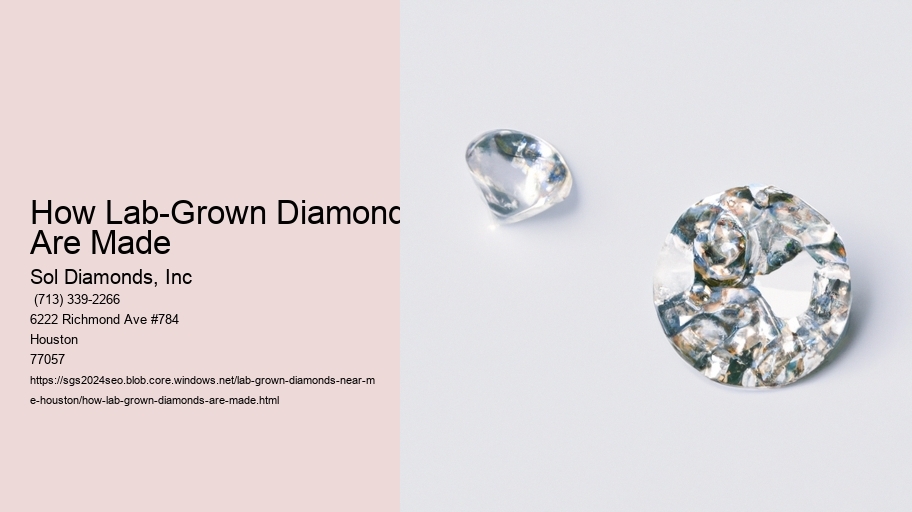Sure, here's an essay on "How Lab-Grown Diamonds Are Made":
The Science Behind Lab-Grown Diamonds .
When people hear the word "diamonds," they often think of those rare gems formed deep within the Earth over millions of years. But not all diamonds come with such an ancient backstory. In fact, lab-grown diamonds are becoming increasingly popular, and they're not as mysterious as one might think. So, how exactly are these sparkling stones made in a lab? Let's dive into it.
First off, let's clear up a myth: lab-grown diamonds aren't fake. They're real diamonds, with the same physical, chemical, and optical properties as those mined from the ground. The main difference lies in their origin. Natural diamonds are created by intense pressure and heat miles beneath the Earth's surface, whereas lab-grown diamonds are crafted by scientists in controlled environments. But don't think it's a simple process – it's anything but.
There are two primary methods for creating lab-grown diamonds: High Pressure High Temperature (HPHT) and Chemical Vapor Deposition (CVD). Neither of these methods is a walk in the park, but they both get the job done.
With HPHT, the process starts with a small diamond seed, usually a fragment of a natural diamond. This seed is placed in a specially designed press that mimics the high pressure and temperature conditions found deep within the Earth. The press applies pressure of approximately 1.5 million pounds per square inch and heats up to temperatures over 2,000 degrees Fahrenheit. Under these extreme conditions, carbon atoms begin to bond with the seed, layer by layer, ultimately forming a diamond. This process might sound straightforward, but achieving the right conditions is no easy feat. Any slight deviation, and you're not getting a diamond – just a lot of wasted effort.
On the other hand, CVD is a bit more modern. It also starts with a diamond seed, but instead of using high pressure, the seed is placed in a chamber filled with carbon-rich gas, like methane. The chamber is then heated to around 1,500 degrees Fahrenheit, causing the gases to ionize into plasma. The carbon atoms from the gas settle onto the seed, slowly building up a diamond crystal. This method allows for more control over the diamond's growth and can produce larger diamonds with fewer impurities. It's not without its hiccups, though. Maintaining the right gas mixture and temperature is crucial, and any fluctuations can affect the quality of the diamond.
You might wonder, why go through all this trouble when natural diamonds already exist? Well, lab-grown diamonds come with some distinct advantages. They're generally more affordable than their natural counterparts, and they're often seen as a more ethical choice. No mining means no displacement of communities or environmental degradation. Plus, lab-grown diamonds can be produced on demand, ensuring a steady supply.
However, it's not all sunshine and roses. Some people are still skeptical about the value and authenticity of lab-grown diamonds. They worry that these man-made gems might not hold their value over time or that they lack the unique imperfections that give natural diamonds their character. But many of these concerns are slowly fading as more people recognize the benefits of lab-grown diamonds.
In conclusion, lab-grown diamonds are a marvel of modern science, demonstrating how far technology has come. While they don't have the ancient allure of natural diamonds, they offer a sustainable, ethical, and economical alternative. Both HPHT and CVD methods showcase human ingenuity, turning carbon into one of the most sought-after gemstones on the planet. So, the next time you see a sparkling diamond, remember – it might just have a fascinating story that began in a laboratory, not deep within the Earth.
